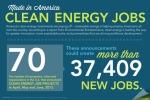
An LBNL scientist explains the properties of liquid nitrogen to students on Bring Your Sons and Daughters to Work Day. | Courtesy of Lawrence Berkeley National Lab | Credit: Roy Kaltschmidt.
This article is part of the Energy.gov series highlighting the “Top Things You Didn’t Know About…” Be sure to check back for more entries soon.
7. According to EnergyStar.gov, the nation’s 17,450 K-12 school districts spend more than $6 billion annually on energy — more than is spent on computers and textbooks combined. Want to help change that? Check out these energy-saving tips and make a difference at your school.
6. You can get a paid internship through the Energy Department that’s related to your college courses or vocational study. There are several programs throughout the Department that offer internships to young adults from all different backgrounds.
5. The Energy Department has organized the National Science Bowl since 1991. Interested in signing up your middle or high school for the competition? Make it through Regionals and move on to the national event hosted annually in Washington, D.C.! You can find application forms here.
4. Crayola’s solar farm provides enough power to make 1 billion Crayola crayons and 500 million markers annually.
3. More than 95 wind energy systems have been installed at campuses across the country through the Office of Energy Efficiency and Renewable Energy’s Wind for Schools project. This includes small wind turbines at rural elementary and secondary schools and Wind Application Centers at universities (where college students are can get an education in wind energy).
2. The winners of last year’s Home Energy Education Challenge saved enough energy to power a TV and Xbox 360 for 846 hours! If you’re a third through eighth grade class with ideas about how your class can use energy more efficiently at home, sign up for the competition and earn awards for your school.
1. It almost always takes less energy to make a product from recycled materials than it does to make it from new materials. Making a ton of paper from recycled paper saves up to 17 trees and uses 50 percent less water. Check out the Energy Information Administration’s Energy Kids page for energy-themed games and activities, science projects, and field trips.





